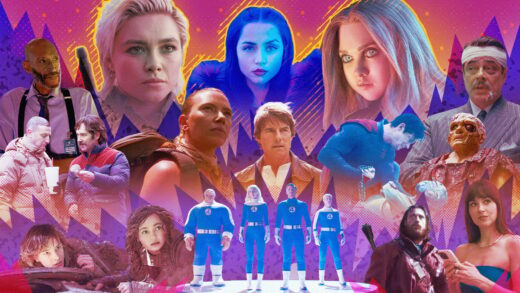The mass of the biggest black holes is unimaginable.
Even a small black hole is extraordinarily dense and massive. If Earth was (hypothetically) crushed into a black hole, it would be under an inch across. Yet there are black holes in the universe bigger than our solar system, and bigger than the giant Andromeda galaxy.
The NASA video below, recently released by the agency’s Goddard Space Flight Center Conceptual Image Lab, shows the gargantuan size and mass of these fascinating cosmic objects. The more mass an object has, the stronger its gravitational pull. Black holes are so massive that not even light can escape.
This “new NASA animation highlights the ‘super’ in supermassive black holes,” NASA writes. “These monsters lurk in the centers of most big galaxies, including our own Milky Way, and contain between 100,000 and tens of billions of times more mass than our Sun.”
There’s a black hole pointed at Earth. You’re not in danger.
In just over 90 seconds, the animation will give you a tour of 10 black holes of increasing size.
When we see actual (and profoundly rare) images of black holes, or artistic conceptions of black holes, we don’t see the lightless black hole itself, but we can see the immensely hot dust and gas rapidly spinning around the object, called an “accretion disk.” Some of this material inevitably falls into the black hole, never to return; much it gets spewed back out into the cosmos, because black holes aren’t efficient consumers of galactic material.
Want more science and tech news delivered straight to your inbox? Sign up for Mashable’s Top Stories newsletter today.
“Black holes are terrible at eating things. They are notoriously picky eaters,” Douglas Gobeille, an astrophysicist and black hole researcher at the University of Rhode Island, told Mashable last year.
“Black holes are terrible at eating things.”
One of the first black holes in the comparison video is Sagittarius A*, the black hole at the center of our Milky Way galaxy. It’s as massive as some 4.3 million suns. The video ends with TON 618, which carries the weight of over 60 billion solar masses.
While black holes can be extremely massive and powerful, there’s no reason to fear them, especially the far-off black holes in other far-off galaxies.
“We tend to anthropomorphize these things,” astrophysicist Misty Bentz told Mashable following the first image ever taken of a black hole. “But really, black holes aren’t evil, mean, or scary. They just… are.”









